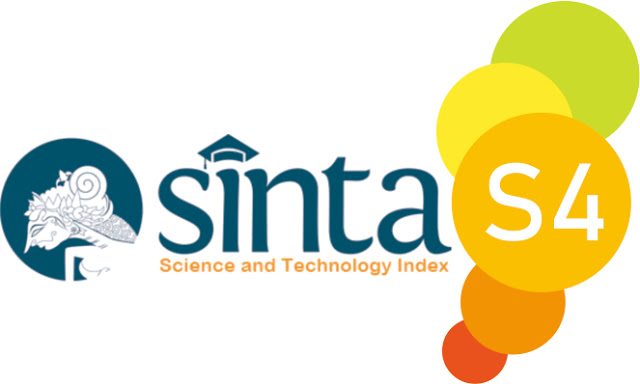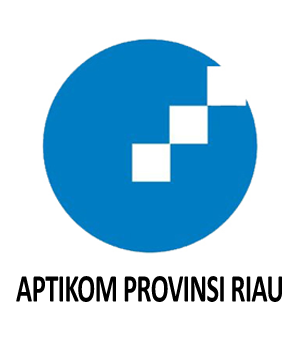A Deep Learning-Based Sentiment Classification for Identifying Advertorial Content in Online News
Abstract
The rapid advancement of technology and the widespread use of the internet have brought significant positive and transformative impacts across various aspects of human life, including finance, healthcare, education, and the media industry. One notable consequence of information transparency is the vast availability and large-scale exchange of data. However, this also presents new challenges, particularly in the spread of misleading content such as disguised advertorials that resemble genuine news. This threatens the objectivity of the information received by the public. To address this issue, an automated solution is needed to identify the distinguishing characteristics of advertorials in online news content. This study proposes a deep learning approach using the Convolutional Neural Network (CNN) model to detect sentiment as an indicator of advertorial content. CNN is a widely used deep learning model for processing sequential and spatial data, capable of automatically learning features from text. The dataset comprises news articles categorized by advertorial traits, such as positive or neutral sentiment, persuasive language, and promotional content highlighting specific entities. The data undergo several processing stages, including text preprocessing, tokenization, padding, and CNN model training. Model performance is evaluated using accuracy, precision, recall, and F1-score. The experimental results show a validation accuracy of 84%, although overfitting issues were observed. Despite ongoing limitations, such as restricted data and suboptimal parameter tuning, the findings suggest that the CNN model has potential for automatically detecting advertorial content and can serve as a basis for future research using more advanced models and refined parameter adjustments.
Downloads
References
P. Widjanarko and L. Hariyani, “Media Convergence-Deconvergence-Coexistence Triad in Indonesia: The Case of Liputan6.com,” Jurnal ASPIKOM, vol. 7, no. 2, 2022, doi: 10.24329/aspikom.v7i2.1134.
N. Sahllal and E. M. Souidi, “A Comparative Analysis of Sampling Techniques for Click-Through Rate Prediction in Native Advertising,” IEEE Access, vol. 11, pp. 24511–24526, 2023, doi: 10.1109/ACCESS.2023.3255983.
C. C. Pasandaran, “Political Advertising Camouflage As News,” Jurnal Komunikasi Ikatan Sarjana Komunikasi Indonesia, vol. 3, no. 2, Dec. 2018, doi: 10.25008/jkiski.v3i2.239.
M. Carvajal and I. Barinagarrementeria, “The Creation of Branded Content Teams in Spanish News Organizations and Their Implications for Structures, Professional Roles and Ethics,” Digital Journalism, vol. 9, no. 7, 2021, doi: 10.1080/21670811.2021.1919535.
K. Z. Ye, Y. M. Naing, Y. Naung, K. P. Nyein, and T. Z. Lin, “Implementation of Burmese Language News Classification System by Using SVM and LSTM Machine Learning Algorithm,” in 2023 IEEE 6th International Conference on Computer and Communication Engineering Technology, CCET 2023, 2023. doi: 10.1109/CCET59170.2023.10335115.
B. R. P. Darnoto, D. Siahaan, and D. Purwitasari, “A Comprehensive Ensemble Deep Learning Method for Identifying Native Advertising in News Articles,” in 8th International Conference on Software Engineering and Computer Systems, ICSECS 2023, Institute of Electrical and Electronics Engineers Inc., 2023, pp. 164–169. doi: 10.1109/ICSECS58457.2023.10256392.
B. R. P. Darnoto, D. Siahaan, and D. Purwitasari, “Deep Learning for Native Advertisement Detection in Electronic News: A Comparative Study,” in 2022 11th Electrical Power, Electronics, Communications, Controls and Informatics Seminar (EECCIS), 2022, pp. 304–309. doi: 10.1109/EECCIS54468.2022.9902953.
B. R. P. Darnoto, D. Siahaan, and D. Purwitasari, “Automated Detection of Persuasive Content in Electronic News,” Informatics, vol. 10, no. 4, Dec. 2023, doi: 10.3390/informatics10040086.
N. Hicham, H. Nassera, and S. Karim, “Enhancing Arabic E-Commerce Review Sentiment Analysis Using a hybrid Deep Learning Model and FastText word embedding,” EAI Endorsed Transactions on Internet of Things, vol. 10, 2024, doi: 10.4108/eetiot.460
. V. F. Pacheco, Microservice Patterns and Best Practices: Explore Patterns Like CQRS and Event Sourcing to Create Scalable, Maintainable, and Testable Microservices, Packt Publishing, 2018.
. M. Fowler, “Microservices,” MartinFowler.com, 2014. [Online]. Available: https://martinfowler.com/articles/microservices.html
. S. Newman, Building Microservices, O’Reilly Media, 2021.
. Nofri Wandi Al-Hafiz, Helpi Nopriandi, and Harianja, “Design of Rainfall Intensity Measuring Instrument Using IoT-Based Microcontroller”, JTOS, vol. 7, no. 2, pp. 202 - 211, Dec. 2024.
. N. W. Al-Hafiz and H. Harianja, “Design of an Internet of Things-Based automatic cat feeding control device (IoT)”, Mandiri, vol. 13, no. 1, pp. 161–169, Jul. 2024.
. PutriD. and Al-HafizN., “SISTEM INFORMASI SURAT KETERANGAN GANTI RUGI TANAH PADA KECAMATAN KUANTAN TENGAH MENGGUNAKAN WEBGIS”, Biner : Jurnal Ilmiah Informatika dan Komputer, vol. 2, no. 2, pp. 112-121, Jul. 2023.
. H. Harianja, N. W. Al-Hafiz, and J. Jasri, “Data Analysis of Informatics Engineering Students of Islamic University of Kuantan Singingi”, JTOS, vol. 6, no. 1, pp. 23 - 30, Jan. 2023.
. Siregar, M., and N. Al-Hafiz. "Design of Cloud Computer to Support Independent Information System Servers Universitas Islam Kuantan Singingi." Journal of Information System Research (JOSH) 3.2 (2022)
. Apri Denta, H. Nopriandi, and E. Erlinda, “Information System Design Realization and Performance Achievements of the Manpower Office of Kuantan Singingi District”, JTOS, vol. 7, no. 1, pp. 01 - 09, Nov. 2024.
. AP Putra, E. Erlinda, and M. Yusfahmi, “Sales System in the Endocell Mobile Phone Business Using the CRM (Customer Relationship Management) Method) in Kompe Berangin Village, Cerenti District”, JTOS, vol. 7, no. 1, pp. 10 - 21, Nov. 2024.
. D. Setiawan, F. Haswan, and J. Jasri, “Design of School Bell Scheduling Application Based on Arduino Uno on MTs Babussalam Simandolak”, JTOS, vol. 7, no. 1, pp. 22 - 30, Jul. 2024.
. D. Juniarti, A. Aprizal, and S. Chairani, “Information System for Analyzing Disease Trends in the Region Cerenti Health UPTD”, JTOS, vol. 7, no. 1, pp. 31 - 43, Jun. 2024.
. F. Restuadi, H. Nopriandi, and A. Aprizal, “ANALISIS QOS JARINGAN INTERNET FAKULTAS TEKNIK UNIVERSITAS ISLAM KUANTAN SINGINGI MENGGUNAKAN WIRESHARK 4.0.3”, JTOS, vol. 7, no. 1, pp. 44 - 54, Jun. 2024.
. J. Jasri and N. W. Al-hafiz, “Designing a mobile-based infaq application markazul quran wassunnah foundation (MQS)Kuantan Singingi”, J. Teknik Informatika CIT Medicom, vol. 15, no. 5, pp. 247–254, Nov. 2023.
. R. Nazli, A. Amrizal, H. Hendra, and S. Syukriadi, “Modeling User Interface Design E-Business Applications for Marketing Umkm Products in Payakumbuh City Using Pieces Framework”, JTOS, vol. 7, no. 2, pp. 55 - 66, Nov. 2024.
. Siti Saniah and Mhd. Furqan, “Classification Of Rice Plant Diseases Using K-Nearest Neighbor Algorithm Based On Hue Saturation Value Color Extraction And Gray Level Co-Occurrence Matrix Features”, JTOS, vol. 7, no. 2, pp. 212 - 223, Dec. 2024.
Copyright (c) 2025 Brian Rizqi Paradisiaca Darnoto, Dony Bahtera Firmawan, Fahrobby Adnan

This work is licensed under a Creative Commons Attribution-ShareAlike 4.0 International License.
This is an open-access article distributed under the terms of the Creative Commons Attribution-ShareAlike 4.0 International License which permits unrestricted use, distribution, and reproduction in any medium. Users are allowed to read, download, copy, distribute, search, or link to full-text articles in this journal without asking by giving appropriate credit, provide a link to the license, and indicate if changes were made. All of the remix, transform, or build upon the material must distribute the contributions under the same license as the original.















